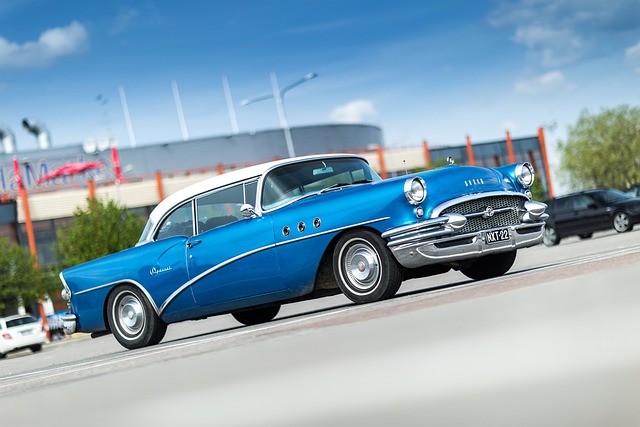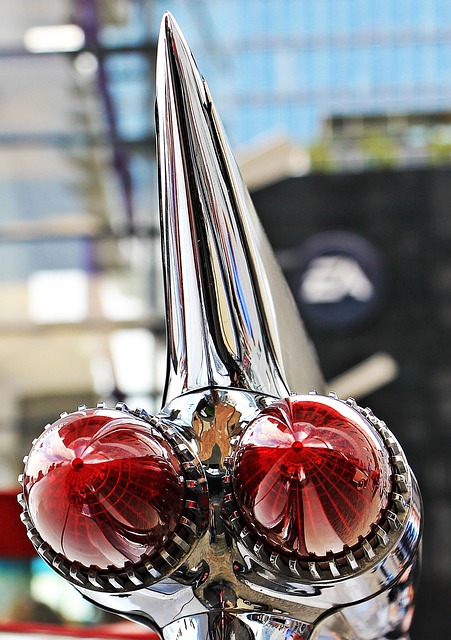Looking to register your car in California? This comprehensive guide walks you through every step, from understanding eligibility requirements to obtaining registration plates. Learn about essential documents needed for a successful DMV VIN verification, preparing your vehicle for inspection, and completing the registration process. By following these steps, you’ll be on your way to ensuring your vehicle is legally registered and ready to hit the California highways.
- Understand Eligibility Requirements for Car Registration
- Gather Necessary Documents for DMV Vin Verification
- Prepare Your Vehicle for Inspection and Registration
- Complete The Car Registration Process at the DMV
- Obtain Registration Plates and Insurance Confirmation
Understand Eligibility Requirements for Car Registration

Before registering your car in California, it’s crucial to understand the eligibility requirements set by the Department of Motor Vehicles (DMV). One key step is ensuring that your vehicle meets all safety and emission standards, which can be verified through a DMV vin verification process. This involves checking the Vehicle Identification Number (VIN) to confirm the car’s authenticity and ensure it complies with state laws.
Additionally, you’ll need to have the necessary documents, including proof of ownership, insurance, and identity. A mobile vin inspection or vin inspection conducted by an authorized agent can streamline this process, as these services offer convenient and accurate verifications. By having your VIN checked through a reputable mobile vin verifier, you can save time and ensure a smooth registration experience at the DMV.
Gather Necessary Documents for DMV Vin Verification

Before heading to the DMV for registration, ensure you have all the required documents ready. One crucial piece is the Vehicle Identification Number (VIN) verification, which can be done through a mobile vin inspection or by visiting a designated station. This process involves checking the vehicle’s unique VIN against the manufacturer’s records to confirm its authenticity and history.
For a seamless dmv vin verification, gather documents such as your valid driver’s license, proof of insurance, vehicle registration (if applicable), and the title or lease agreement. Additionally, have your vehicle’s VIN readily available, which can usually be found on the dashboard near the window or on the vehicle’s identification plate. Consider using a mobile vin verifier for a quick and convenient check before your DMV visit to save time and avoid potential delays.
Prepare Your Vehicle for Inspection and Registration

Before heading to the California DMV for registration, ensure your vehicle is ready with a successful VIN (Vehicle Identification Number) verification. This process, often facilitated through mobile vin verification or a vin inspection, checks critical data against the manufacturer’s records. It confirms the vehicle’s identity, history, and compliance with emission standards, among other things. This step is crucial as it ensures you’re providing accurate information, which is essential for both legal registration and insuring your vehicle effectively.
During this preparation, double-check your vehicle’s documentation, including the title, registration papers, and insurance details. Also, make sure any necessary repairs or maintenance are up to date, as these can impact both the inspection and registration outcomes. Properly maintaining your vehicle not only ensures a smoother process but also guarantees safety on California’s roads.
Complete The Car Registration Process at the DMV

Once you’ve gathered all the necessary documents, it’s time to complete the car registration process at your local California DMV (Department of Motor Vehicles). This involves a few key steps, including providing proof of insurance, passing a vehicle inspection, and conducting a DMV VIN verification. The VIN (Vehicle Identification Number) is a unique code that identifies your car, and this check ensures the details match those on record. You can streamline the process by using a mobile vin verifier or scheduling an appointment for a vin inspection, which allows you to get everything done quickly and efficiently at the DMV.
During the visit, bring along your registration application, title documents (if applicable), proof of ownership, insurance card, and any other requested forms. A friendly DMV representative will guide you through the process, ensuring that all information is accurate and complete. They’ll also perform a safety inspection to verify your car meets California’s standards. After successfully completing these steps, you’ll be on your way with a registered vehicle, ready to hit the open road.
Obtain Registration Plates and Insurance Confirmation

After completing your vehicle’s purchase and ensuring all necessary paperwork is in order, the next step in registering your car in California involves obtaining registration plates and confirming insurance coverage. Before heading to the DMV (Department of Motor Vehicles), it’s crucial to conduct a DMV VIN verification using the unique Vehicle Identification Number (VIN) for your car. This process ensures that your vehicle meets all legal standards and is eligible for registration.
For new vehicles, this typically involves scheduling a vin inspection at a certified location or utilizing mobile vin verification services that can perform the check right from your driveway. Once your VIN inspection is complete and you have confirmation of insurance, you can proceed to the DMV with required documents such as proof of purchase, title, and insurance card to finalize the registration process.
Registering a car in California is a straightforward process, but understanding the requirements and gathering the necessary documents is key. By ensuring your vehicle meets all eligibility criteria, including successful DMV VIN verification, you’re well on your way to legal and safe driving. Each step, from preparing for inspection to obtaining registration plates, plays a crucial role in making your car official on California’s roads. Remember to keep your documentation up-to-date for hassle-free future renewals.
